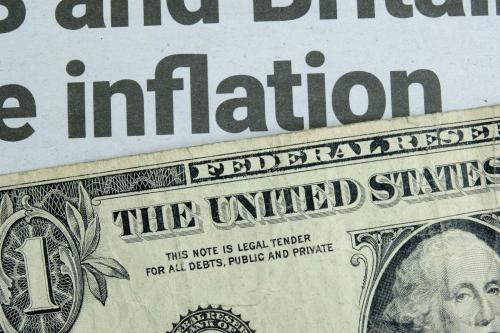Chairman Whitfield, Congressman Rush, and Members of the Subcommittee, I appreciate the opportunity to appear here today. My comments will cover the market incentives for energy efficiency innovation, the most cost-effective means of reducing pollution stemming from energy use, and the limitations and problems associated with government energy-efficiency mandates.
Many of the points I will make come from a Mercatus working paper I co-authored with W. Kip Viscusi of Vanderbilt University, which I have submitted along with my testimony. A revised version of the paper is forthcoming in the Journal of Regulatory Economics.
Market prices convey information about the strength of consumer demand for a good and the scarcity of supply for that good, allowing for a balancing of buyers’ and sellers’ interests. In the market for appliances, prices reflect how consumers value features such as energy efficiency and convenience. If the price of energy increases, consumers will be willing to pay more for more efficient appliances, providing a clear incentive to suppliers to respond. The response, in turn, depends on the constraints on production, such as the state of technology. Economists agree that this flow of information between producers and consumers is better achieved through the price mechanism than through government oversight. One important benefit of the market process is that consumers with different preferences can find appliances that best suit their needs. For example, a consumer who lives in a region where energy is inexpensive may prefer appliances that emphasize convenience over energy efficiency compared to a consumer who lives in a region with expensive energy. In short, there is no uniformly “right” amount of energy efficiency in an appliance any more than there is a “right” variety of apple.
However, market prices can provide misleading signals to the extent that they do not account for the pollution costs stemming from energy use. In other words, the price that shows up on one’s electric bill accounts for the private cost of energy, but it does not include the additional environmental damages that impact others due to one’s energy use. Economists refer to these latter costs as “negative externalities.” The best approach to addressing this problem of negative externalities is for the government to price these pollution costs directly. Consumers and firms would then face the full cost of energy use, and markets would respond through some combination of new technologies, alternative fuels, and conservation.
There are a number of reasons why the market-oriented approach of setting a price on pollution is more cost-effective than regulations such as energy efficiency mandates. First, the one-size-fits-all energy efficiency mandates ignore the substantial diversity of preferences, financial resources, and personal situations that consumers and firms must align in order to make their decisions. Second, unlike a price set for pollution, energy efficiency mandates do not promote conservation. Indeed, they lower the cost of using an appliance, reversing some of the energy savings. For example, an energy efficiency standard for air conditioners increases the incentive to run the air conditioners longer. Third, energy efficiency standards apply only to new products, which can create incentives for consumers and firms to retain older (and thus less energy-efficient) products.
Kip Viscusi and I examined a number of recent government regulations that mandate energy efficiency standards for vehicles and appliances. Despite the fact that these regulations are frequently touted as pollution-reducing initiatives, the agencies’ own estimates confirm that the environmental benefits are negligible and are often dwarfed by the societal costs they impose.
In order to justify these expensive regulations, the agencies assert that consumers and firms are making irrational purchase choices and that they therefore benefit if product choices are restricted to those that meet the agencies’ mandated standards. Dismissing consumer preferences as irrational is a significant departure from well-established tenets for conducting cost-benefit analyses set forth in the economics literature and by the administration’s Office of Management and Budget.
By claiming regulatory benefits from the correction of so-called “consumer irrationality,” agencies are shifting regulatory priorities from the important goal of reducing the harm individuals impose on others (through pollution) towards the nebulous and unsupported goal of reducing harm individuals cause to themselves by purchasing purportedly uneconomic products. This shift from environmental protection to consumer protection results in a host of costly regulations that are far less effective than a government policy that simply sets a price for pollution. It also establishes a dangerous precedent: If agencies can justify regulations on the unsubstantiated premise that consumers and firms (but not regulators) are irrational, then they can justify the expansive use of regulatory powers to control and constrain virtually all choices consumers and firms make.
To summarize: I believe that markets generally work well to provide incentives for energy efficiency and to satisfy consumers’ diverse tastes. To the extent that energy prices fail to incorporate the environmental cost of energy use, the most sensible government response is to price the pollution costs directly, and then allow consumers and businesses to respond to the higher prices. Regulations and mandates are inferior policies, but still may be better than doing nothing if the benefits exceed the costs. Unfortunately, by the agencies’ own estimates, energy efficiency mandates frequently lead to minimal environmental benefits that are far less than the costs. In an effort to justify these uneconomic regulations, the agencies have deviated from well-established economic tenets by asserting that consumers and firms are “irrational” and that they therefore benefit from government mandates that restrict choice. The evidence for this view is weak, and assuming that citizens are not capable of making sensible decisions that affect their own pocketbooks is not the right way to advance the important goal of enhancing the quality of our environment.



Commentary
TestimonyAmerican Energy Security and Innovation: An Assessment of Private-Sector Successes and Opportunities in Energy Efficient Technologies
February 26, 2013